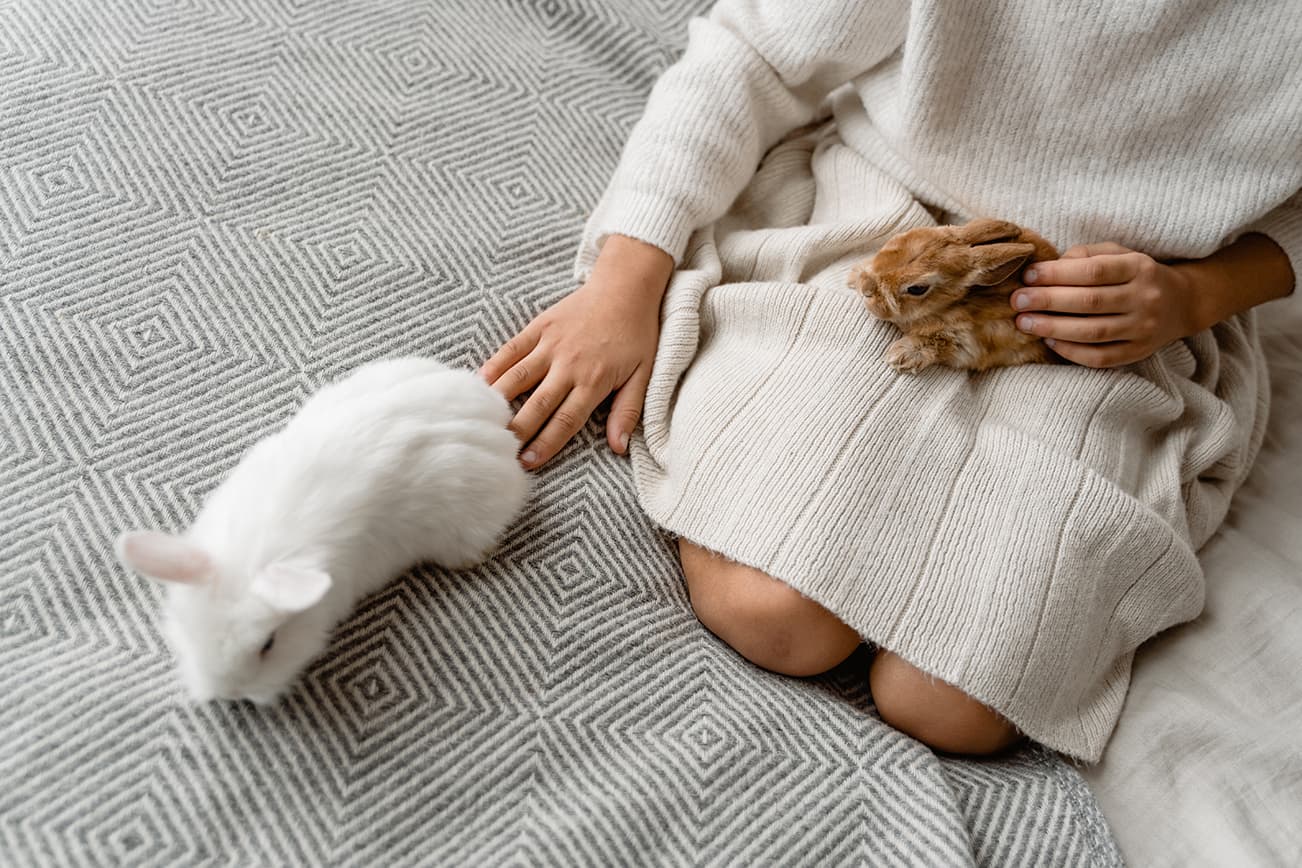JavaScript seems to be disabled in your browser. For the best experience on our site, be sure to turn on Javascript in your browser.
Tips for Understanding Rabbit Body Language

You will be stunned by how rich and wide your rabbit's body language is when you start learning how to communicate with it.
By using its posture, movement, and sounds, your rabbit can let you know how it feels from time to time.
Some of these movements and sounds can be indications of emotions such as anger, fear, happiness, or romance. Rabbits can read human body language too. They can detect intent in other species and communicate with their species.
These characteristics have enabled rabbits to survive for millions of years.
Understanding and being able to interpret your rabbit's signals would help both you and your pet. As bunny owners, it is our responsibility to work within our pet's emotional limits and needs. Doing this will establish a good bond, which leads to security and enjoyment on both sides.
When you misunderstand your rabbit, you will often perceive it as troublesome. Not to worry, most issues can be identified and solved by learning rabbit body language.
Before we proceed to tell you some signs given by your rabbit and what they mean, check out the latest addition to our RAT HEALTHCARE, RAT TOYS, RAT FOOD & TREATS.
How your rabbit shows affection
Your rabbit can sometimes heat butt their owners for attention. It could also circle to demand your attention about something, usually a snack or petting. Unsterilized male rabbits also hum when they feel amorous. The best show of affection comes in the form of rabbit kisses. However, this behaviour is very rare but involves your bunny giving your hand or face a lick.
How your rabbit warns you
Rabbit emotions include anger and annoyance. When ticked off, your rabbit can send a warning by instantly thumping a hind leg. When this behaviour is not directed at you, look for what is wrong. It could be because of a predator or a strange object he doesn't like. Rabbits do fight ugly. Other signs include hissing, growling, or snorting. Finally, when physically handled, a displeased rabbit may take a quick chomp at you.
How your rabbit tells you it's scared
Rabbits experience different levels of fear like humans. It might start kicking for all when panicky from being held and will whimper when it knows it is about to get picked up by a person. When scared, your rabbit can do something called flattening. This is an instinctive attempt to hide. It will make itself as flat as possible, with the ears held tightly against the body. If your rabbit is in this position, it mustn't be ignored. Find out what's causing this fearful behaviour and remove them or your pet from the situation. Should the rabbit be scared of you, allow it some space. The worst way your rabbit will show fear is to scream.
How your rabbit tells you its territorial
Your rabbit has glands underneath its head specifically used to mark territory and prompting an interesting behaviour called “chinning.'' It does this by hopping over to furniture, a sleeping quarter or anything that takes its fancy and then rubs its chin on the desired object. This scent warns other rabbits the territory is taken. This smell isn't detectable to humans and chinning generally makes a rabbit feel secure.
How to know your rabbit is satisfied
If your rabbit is content, it will sometimes purr like a cat or rest on its side like a dog. Its legs would be extended in a relaxed way, either to one side or behind the animal while resting on its stomach. If your rabbit is extremely relaxed, it will sprawl on its backs. A content rabbit looking distinctly stress-free with muscles that are soft, its ears are away from the body, and the eyes have a soft look. It will also groom itself.










